A history of the biggest discoveries by citizen scientists

Citizen science isn’t a new concept. Charles Darwin himself is often credited as one of the greatest citizen scientists, neglecting to finish the homework for his medical degree, in favour of studying marine invertebrates as an amateur.
Here in Australia, chief scientist Alan Finkel credits German migrant Ferdinand Mueller with “planting the seeds” of citizen science back in the mid-1800s after he enlisted the Australian public to help collect plants so he could create the first complete catalogue of Australian flora.
“Here was a project that united men and women from every colony, with a mighty vision, and a love of country,” he said in a speech at the annual Citizen Science Association conference in February this year.
The manager of Digital Collections and Citizen Science at the Australian Museum, Paul Flemons, said that, according to research conducted by the museum, this feeling of community and participation continues to inspire citizen scientists around the country. “It enables people to make a difference and it’s usually something they’re passionate about or that they enjoy doing, like going outdoors or being in the bush. But mainly, it’s about making a contribution to society,” Paul said – and citizen science’s popularity is growing at a rapid pace.
“There are two factors to this growth, and the first is that people have the time. Baby Boomers are retired and they’re savvy enough with technology to contribute, which is the second component: the technology. People can now connect and make contributions because the data can be easily captured.”
The challenge citizen science faces today is identical to the one it faced all those centuries ago. “There’s always the ongoing challenge of mainstream science taking citizen science seriously, and being satisfied with the quality of data that citizen science can produce,” Paul said.
“But we’re constantly vigilant and we have more projects focused on capturing good data, like with FrogID, where citizen scientists can record frog calls and have them identified or confirmed by our experts here at the museum.”
Here, we look at some of the most significant contributions by citizen scientists in Australia.
“But we’re constantly vigilant and here at the Australian Museum we have a number of projects that are focused on capturing good data, like with FrogID, where citizen scientists are helping us map Australia’s frogs by recording their calls using their mobile phones. We have labelled the calls as “audio DNA”, because they enable our experts here at the Museum to reliably identify each call to species, providing us with a fantastic dataset for research related to frog occurrence and behaviour.”
1. The first complete catalogue of Australia flora
German botanist Ferdinand Mueller first came to Australia in 1847, hoping to catalogue all of Australia’s flora.
He began collecting plants, beginning in South Australia and travelling to Queensland and Victoria, until he realised that it would be more efficient if he could enlist people to send him specimens instead.
By advertising the task in newspapers, schools and other means, he inspired an estimated 1300 citizen scientist to participate in the project, which culminated into Mueller’s Flora of Australia.
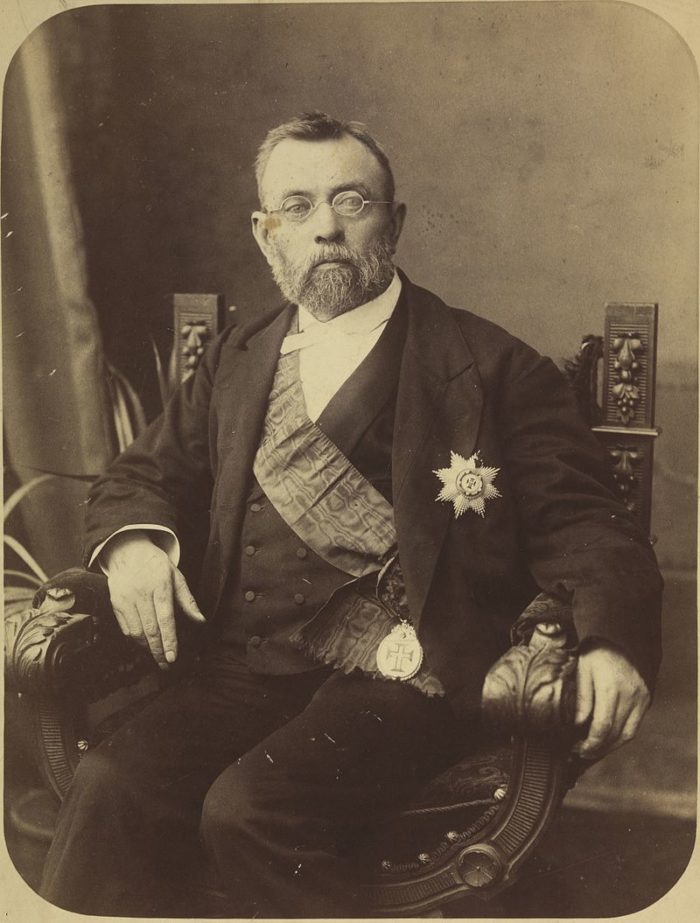
Ferdinand Mueller. Image credit: Wikimedia
2. The discovery of the giant Gippsland earthworm
In 1870, while surveying land across the Moe-to-Bunyip railway line along Brandy Creek in Warragal, Victoria, a group of farmers came across what they initially believed to be a giant snake.
Curious about the ‘snake’ they’d found, they sent one specimen to the University of Melbourne where Professor Frederick McCoy then described it.
This was the first time anyone had heard of giant earthworms. To this day, the giant Gippsland earthworm (Megascolides australis) is regarded as the longest in the world.
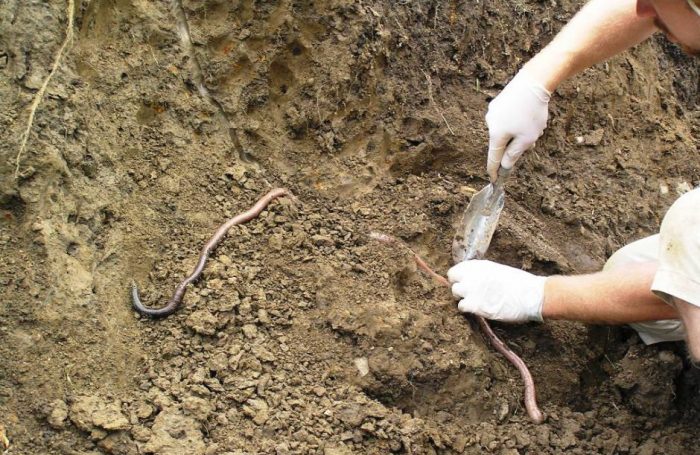
Image credit: Beverley Van Praagh
3. The re-discovery of the bridled nailtail wallaby
The bridled nailtail wallaby was believed to be extinct in its natural habitat across inland eastern Australia for several years, the last one having been spotted in the 1930s.
That was until 1973, when a fencing contractor working near the outback town of Dingo, Queensland, caught sight of a bizarre-looking wallaby.
The contractor and his wife then matched the description to an article on extinct species in Woman’s Day magazine and alerted authorities.
By 1978 the Queensland Government bought the property to protect the few hundred wallabies that remained, and it became part of Taunton National Park.

Image credit: Wikimedia
4. The return of the western pygmy possum
Thought to be extinct in the state of South Australia for over 50 years, the western pygmy possum was re-discovered back in 1986 by maintenance worker Terry Joy.
“I had felt that as the habitat was particularly suitable for pygmy possums there was always a chance of an isolated occurrence, but never really thought I would capture one,” he told the Victor Harbour Times that October.
5. The discovery of the Wollemi pine
In September 1994, bushwalker David Noble was out canyoning in the Blue Mountains National Park west of Sydney.
While descending into a rainforest gorge he found the bizarre-looking plant, which came to be known as Wollemia nobilis, after its discoverer.
Prior to this discovery, the plant was only known from fossil records. The Wollemi pine has been described as a “living fossil”, as its existence dates back to the age of dinosaurs.
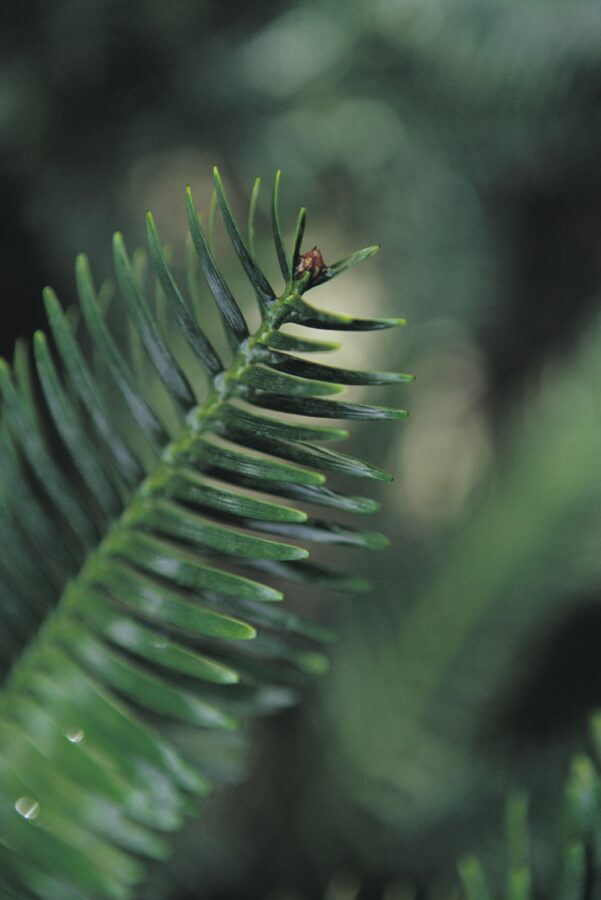
Image credit: Russell Shakespeare/Australian Geographic
Related story: Secrets and fires: saving our ‘dinosaur’ trees
Related story: Wollemi: Ancient trees get NSW bushfire protection
Related story: Gallery: Landscapes of Wollemi National Park
6. The re-discovery of the idiot fruit tree
The idiot fruit tree (Idiospermum australiense) was first discovered in 1902 by German botanist Ludwig Diels but his specimen was destroyed in a fire in 1943 caused by a bombing raid by the Allies.
It wasn’t until 1973 that the plant was rediscovered by Daintree grazier John Nicholas, after the seed of the plant was found to be poisoning his cows.
The rediscovery was hailed as the greatest botanical discovery of the century. The idiot tree is the only member of its family in the Southern Hemisphere and is restricted to about 2300 ha of the Wet Tropics World Heritage Area in the Daintree Rainforest.
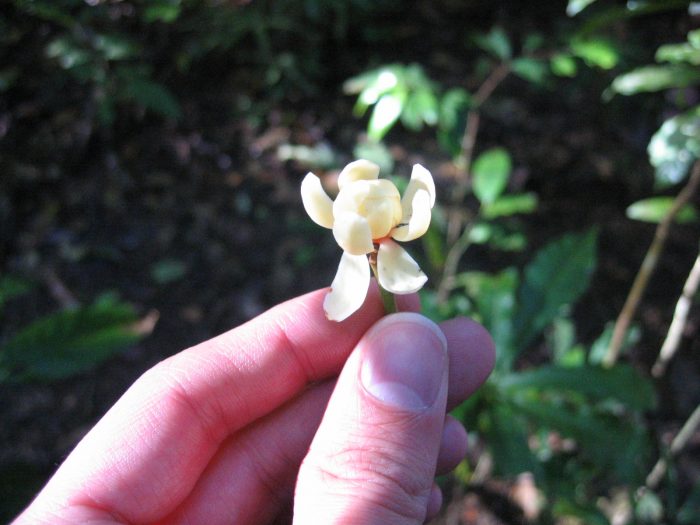
(Image credit: Daniel Spronk)
7. The discovery of an ancient megalodon tooth
Citizen scientist Philip Mullaly discovered the fossilised remains of an ancient shark frenzy along Victoria’s Surf Coast, confirming its presence in the area.
While taking a stroll along the beach, he spotted the fossilised teeth of a Carcharocles angustidens, a species of giant shark that lived tens of millions of years ago.
According to experts at Museums Victoria, the shark could grow to more than 9m long, meaning it was almost twice the length of a great white shark.
8. Primitive moth discovered on Kangaroo Island
In 2015, an entirely new family of moth, Aenigmatineidae, was rediscovered among native pine trees on Kangaroo Island, South Australia by citizen scientist Richard Glatz.
Richard is a professional entomologist but had never studied moths before. Because of the moths peculiar look he showed two specimens he’d caught to expert Andy Young.
“Andy was smart enough to know that the moth was primitive and exciting, so he alerted people at the Australian National Insect Collection,” said biologist Doug Hilton, who helped complete one of the first DNA sequences on the moth.
The ‘enigma moth’, as it’s commonly known, is a glittery-gold colour and its mouthparts and genitals are oddly primitive, meaning it can provide important information about the evolution of moths and butterflies.
“New families are seldom discovered and that is why the project generated real interest, more broadly than the usual research circles,” Doug said.
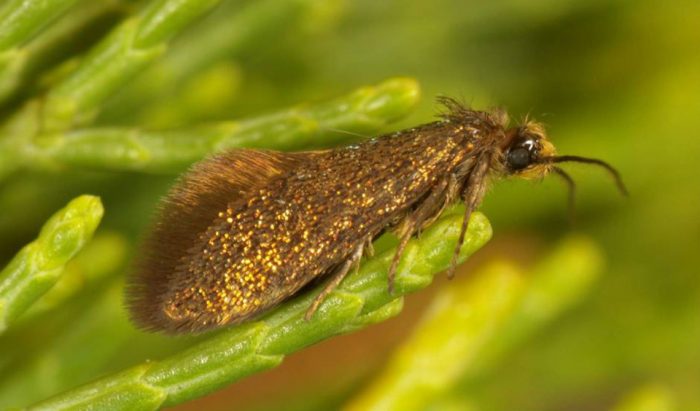
(Image credit: Geogre Gibbs)
9. The discovery of a new species of Maratus
Bird-watcher Stuart Harris began his citizen science journey back in 2008 when he bought his first macro lens, ventured into Namadgi National Park, near Canberra, and captured an image of a colourful little peacock spider.
He posted the image online and was contacted by a scientist from the United States, who then put him into contact with well-known peacock spider enthusiast Jurgen Otto, who told Stuart he had to go back into the national park and find a specimen, just to be sure it was a new species.
Stuart spent up to 150 hours over almost three years trying to find the tiny spider again. And on 22 October 2011, he finally found what he was looking for: a new species of peacock spider, to be named Maratus harrisi.
Since this first discovery, Stuart has discovered and helped to discover seven species of Maratus.
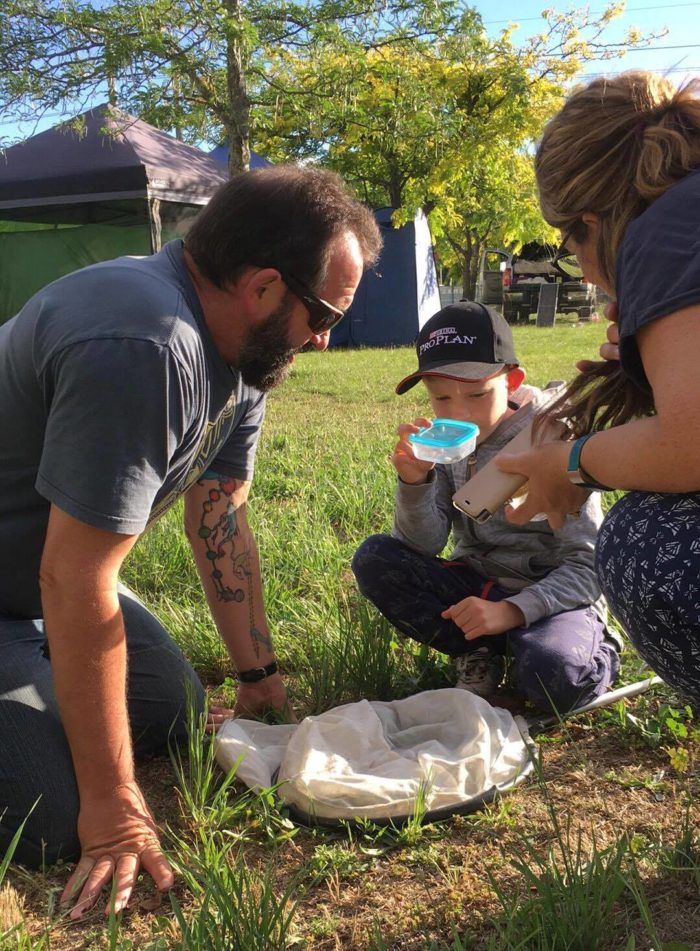
Stuart now spends much of his time sharing the benefits of citizen science.

